Brownstone Institute
Is Free Speech a Relic in America?
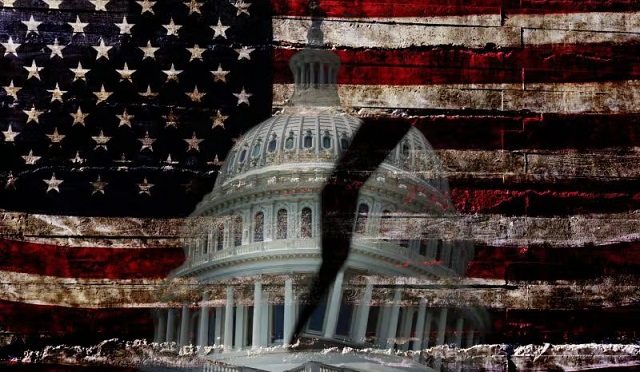
From the Brownstone Institute
BY
A CISA advisory committee last year issued a report that “broadened” what it targeted to include “the spread of false and misleading information because it poses a significant risk to critical function, like elections, public health, financial services and emergency responses.” Thus, any idea that government officials label as “misleading” is a “significant risk” that can be suppressed.
Is the First Amendment becoming a historic relic? On July 4, 2023, federal judge Terry Doughty condemned the Biden administration for potentially “the most massive attack against free speech in United States history.” That verdict was ratified by a federal appeals court decision in September 2023 that concluded that Biden administration “officials have engaged in a broad pressure campaign designed to coerce social-media companies into suppressing speakers, viewpoints, and content disfavored by the government.”
In earlier times in America, such policies would have faced sweeping condemnation from across the political spectrum. But major media outlets like the Washington Post have rushed to the barricades to defend the Biden war on “misinformation.” Almost half of Democrats surveyed in September 2023 affirmed that free speech should be legal “only under certain circumstances.” Fifty-five percent of American adults support government suppression of “false information” — even though only 20 percent trust the government.
Biden’s War on Free Speech
The broad support for federal censorship is perplexing considering that courts have vividly laid out the government’s First Amendment violations. Doughty delivered 155 pages of damning details of federal browbeating, jawboning, and coercion of social-media companies. Doughty ruled that federal agencies and the White House “engaged in coercion of social media companies” to delete Americans’ comments on Afghanistan, Ukraine, election procedures, and other subjects. He issued an injunction blocking the feds from “encouraging, pressuring, or inducing in any manner the removal, deletion, suppression, or reduction of content containing protected free speech.”
Censors reigned from the start of the Biden era. Barely two weeks after Biden’s inauguration, White House Digital Director Rob Flaherty demanded that Twitter “immediately” remove a parody account of Biden’s relatives. Twitter officials suspended the account within 45 minutes but complained they were already “bombarded” by White House censorship requests at that point.
Biden White House officials ordered Facebook to delete humorous memes, including a parody of a future television ad: “Did you or a loved one take the COVID vaccine? You may be entitled….” The White House continually denounced Facebook for failing to suppress more posts and videos that could inspire “vaccine hesitancy” — even if the posts were true. Facebook decided that the word “liberty” was too hazardous in the Biden era; to placate the White House, the company suppressed posts “discussing the choice to vaccinate in terms of personal or civil liberties.”
Flaherty was still unsatisfied and raged at Facebook officials in a July 15, 2021, email: “Are you guys f–king serious?” The following day, President Biden accused social-media companies of “killing people” by failing to suppress all criticism of COVID vaccines.
Federal Censorship
Censorship multiplied thanks to an epic bureaucratic bait-and-switch. After allegations of Russian interference in the 2016 election, the Cybersecurity and Infrastructure Security Act was created to protect against foreign meddling. Prior to Biden taking office, CISA had a “Countering Foreign Influence Task Force.” In 2021, that was renamed the “Mis-, Dis- and Mal-information Team (‘MDM Team’).”
But almost all the targets of federal censorship during the Biden era have been Americans. Federal censorship tainted the 2020 and 2022 elections, spurring the suppression of millions of social-media posts (almost all from conservatives). During the 2020 election, CISA targeted for suppression assertions such as “mail-in voting is insecure” — despite the long history of absentee ballot fraud.
CISA aims to control Americans’ minds: A CISA advisory committee last year issued a report that “broadened” what it targeted to include “the spread of false and misleading information because it poses a significant risk to critical function, like elections, public health, financial services and emergency responses.” Thus, any idea that government officials label as “misleading” is a “significant risk” that can be suppressed.
Where did CISA find the absolute truths it used to censor American citizens? CISA simply asked government officials and “apparently always assumed the government official was a reliable source,” the court decision noted. Any assertion by officialdom was close enough to a Delphic oracle to use to “debunk postings” by private citizens. Judge Doughty observed that the free-speech clause was enacted to prohibit agencies like CISA from picking “what is true and what is false.”
Covid-Inspired Censorship
“Government = truth” is the premise for the Biden censorship regime. In June 2022, Flaherty declared that he “wanted to monitor Facebook’s suppression of COVID-19 misinformation ‘as we start to ramp up [vaccines for children under the age of 5].’” The FDA had almost zero safety data on COVID vaccines for infants and toddlers. But Biden announced the vaccines were safe for those target groups, so any assertion to the contrary automatically became false or misleading.
Biden policymakers presumed that Americans are idiots who believe whatever they see on Facebook. In an April 5, 2021, phone call with Facebook staffers, White House Strategy Communication chief Courtney Rowe said, “If someone in rural Arkansas sees something on FB [Facebook], it’s the truth.”
In the same call, a Facebook official mentioned nose bleeds as an example of a feared COVID vaccine side effect. Flaherty wanted Facebook to intervene in purportedly private conversations on vaccines and “Direct them to CDC.” A Facebook employee told Flaherty that “an immediate generated message about nose bleeds might give users ‘the Big Brother feel.’” At least the Biden White House didn’t compel Facebook to send form notices every 90 seconds to any private discussion on COVID: “The Department of Homeland Security wishes to remind you that there is no surveillance. Have a nice day.” Flaherty also called for Facebook to crack down on WhatsApp exchanges (private messages) between individuals.
Federal agencies responded to legal challenges by portraying themselves as the same “pitiful, helpless giants” that President Richard Nixon invoked to describe the US government when he started bombing Cambodia. Judge Doughty wrote that federal agencies “blame the Russians, COVID-19 and capitalism for any suppression of free speech by social-media companies.” But that defense fails the laugh test.
Federal agencies pirouetted as a “Ministry of Truth,” according to the court rulings, strong-arming Twitter to arbitrarily suspend 400,000 accounts, including journalists and diplomats.
The Biden administration rushed to sway the appeals court to postpone enforcement of the injunction and then sought to redefine all its closed-door shenanigans as public service. In its briefs to the court, the Justice Department declared, “There is a categorical, well-settled distinction between persuasion and coercion,” and castigated Judge Doughty for having “equated legitimate efforts at persuasion with illicit efforts to coerce.”
Biden’s Justice Department denied that federal agencies bullied social-media companies to suppress any information. Instead, there were simply requests for “content moderation,” especially regarding COVID. Actually, there were tens of thousands of “requests” that resulted in the suppression of millions of posts and comments by Americans.
Team Biden champions a “no corpse, no delicta” definition of censorship. Since federal SWAT teams did not assail the headquarters of social-media firms, the feds are blameless. Or, as Justice Department lawyer Daniel Tenny told the judges, “There was a back and forth. Sometimes it was more friendly, sometimes people got more testy. There were circumstances in which everyone saw eye to eye, there were circumstances in which they disagreed.”
It’s irrelevant that President Joe Biden publicly accused social-media companies of murder for not censoring far more material and that Biden appointees publicly threatened to destroy the companies via legislation or prosecution. Nope: It was just neighborly discussions between good folks.
The Courts Strike Back
At the appeals court hearing, Judge Don Willett, one of the most principled and penetrating judges in the nation, had no problem with federal agencies publicly criticizing what they judged false or dangerous ideas. But that wasn’t how Team Biden compelled submission: “Here you have government in secret, in private, out of the public eye, relying on … subtle strong-arming and veiled or not-so-veiled threats.” Willett vivified how the feds played the game: “That’s a really nice social-media platform you’ve got there, it would be a shame if something happened to it.”
Judge Jennifer Elrod compared the Biden censorship regime to the Mafia: “We see with the mob … they have these ongoing relationships. They never actually say, ‘Go do this or else you’re going to have this consequence.’ But everybody just knows.”
Yet the Biden administration was supposedly innocent because the feds never explicitly spelled out “or else,” according to the Justice Department lawyer. This is on par with redefining armed robbery as a consensual activity unless the robber specifically points his gun at the victim’s head. As economist Joseph Schumpeter aptly observed, “Power wins, not by being used, but by being there.”
In its September decision, the appeals court concluded that the White House, FBI, Centers for Disease Control and Prevention (CDC), and the US Surgeon General’s office trampled the First Amendment by coercing social media companies and likely “had the intended result of suppressing millions of protected free speech postings by American citizens.”
The court unanimously declared that federal
officials made express threats…. But, beyond express threats, there was always [italic in original] an “unspoken or else.” The officials made clear that the platforms would [italic in original] suffer adverse consequences if they failed to comply, through express or implied threats, and thus the requests were not optional.
The appeals court also took a “real-world” view of the nation’s most feared law enforcement agency: “Although the FBI’s communications did not plainly reference adverse consequences, an actor need not express a threat aloud so long as, given the circumstances, the message intimates that some form of punishment will follow noncompliance.” The federal appeals court upheld part of the injunction while excluding some federal agencies from anticensorship restrictions.
The Biden administration quickly appealed the partial injunction to the Supreme Court, telling the court: “Of course, the government cannot punish people for expressing different views…. But there is a fundamental distinction between persuasion and coercion. And courts must take care to maintain that distinction because of the drastic consequences resulting from a finding of coercion.”
The Biden brief bewailed that the appeals court found that “officials from the White House, the Surgeon General’s office, and the FBI coerced social-media platforms to remove content despite the absence of even a single instance in which an official paired a request to remove content with a threat of adverse action.” But both the federal district court and the appeals court decisions offered plenty of examples of federal threats.
The New Civil Liberties Alliance, one of the plaintiffs, scoffed: “The Government argues that the injunction interferes with the government’s ability to speak. The Government has a wide latitude to speak on matters of public concern, but it cannot stifle the protected speech of ordinary Americans.” And the injunction impedes federal officials from secretly coercing private companies to satisfy White House demands.
As the Biden administration pressured the Supreme Court, the anticensorship lawyers on September 25 secured an en banc rehearing of their case, which consists of a panel of all 17 active Fifth Circuit judges. The plaintiffs were especially concerned that the Cybersecurity and Infrastructure Security Act was excluded from the injunction. CISA and its array of federal censorship contractors have sowed far too much mischief in recent years. The appeals court modified the injunction to put a leash on CISA.
Censorship could cast the deciding vote in the 2024 presidential election. Judge Doughty issued his injunction in part because federal agencies “could use their power over millions of people to suppress alternative views or moderate content they do not agree with in the upcoming 2024 national election.”
Much of the mainstream media is horrified at the prospect of reduced federal censorship. The Washington Post article on Doughty’s decision fretted, “For more than a decade, the federal government has attempted to work with social media companies to address criminal activity, including child sexual abuse images and terrorism.” The Post did not mention the Biden crusade to banish cynicism from the Internet. Journalist Glenn Greenwald scoffed, “The most surreal fact of U.S. political life is that the leading advocates for unified state/corporate censorship are large media corporations.”
Fifty years ago, philosopher Hannah Arendt wrote of the “most essential political freedom, the right to unmanipulated factual information without which all freedom of opinion becomes a cruel hoax.” The battle over federal censorship will determine whether Americans can have more than a passing whiff of that political freedom. Ohio Attorney General Dave Yost joined the lawsuit against censorship and commented in September: “The federal government doesn’t get to play referee on the field of public discourse. If you let them decide what speech is OK, one day yours might not be.”
On October 20, the Supreme Court announced that it would rule on this case, with a decision expected within a few months. Stay tuned for plenty of legal fireworks and maybe even good news for freedom.
This article was originally published in the December 2023 edition of Future of Freedom.
Brownstone Institute
If the President in the White House can’t make changes, who’s in charge?
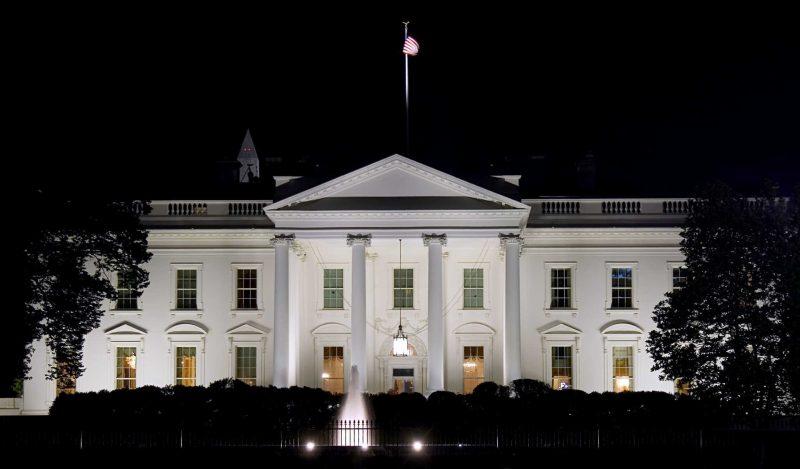
From the Brownstone Institute
By
Who Controls the Administrative State?
President Trump on March 20, 2025, ordered the following: “The Secretary of Education shall, to the maximum extent appropriate and permitted by law, take all necessary steps to facilitate the closure of the Department of Education.”
That is interesting language: to “take all necessary steps to facilitate the closure” is not the same as closing it. And what is “permitted by law” is precisely what is in dispute.
It is meant to feel like abolition, and the media reported it as such, but it is not even close. This is not Trump’s fault. The supposed authoritarian has his hands tied in many directions, even over agencies he supposedly controls, the actions of which he must ultimately bear responsibility.
The Department of Education is an executive agency, created by Congress in 1979. Trump wants it gone forever. So do his voters. Can he do that? No but can he destaff the place and scatter its functions? No one knows for sure. Who decides? Presumably the highest court, eventually.
How this is decided – whether the president is actually in charge or really just a symbolic figure like the King of Sweden – affects not just this one destructive agency but hundreds more. Indeed, the fate of the whole of freedom and functioning of constitutional republics may depend on the answer.
All burning questions of politics today turn on who or what is in charge of the administrative state. No one knows the answer and this is for a reason. The main functioning of the modern state falls to a beast that does not exist in the Constitution.
The public mind has never had great love for bureaucracies. Consistent with Max Weber’s worry, they have put society in an impenetrable “iron cage” built of bloodless rationalism, needling edicts, corporatist corruption, and never-ending empire-building checked by neither budgetary restraint nor plebiscite.
Today’s full consciousness of the authority and ubiquity of the administrative state is rather new. The term itself is a mouthful and doesn’t come close to describing the breadth and depth of the problem, including its root systems and retail branches. The new awareness is that neither the people nor their elected representatives are really in charge of the regime under which we live, which betrays the whole political promise of the Enlightenment.
This dawning awareness is probably 100 years late. The machinery of what is popularly known as the “deep state” – I’ve argued there are deep, middle, and shallow layers – has been growing in the US since the inception of the civil service in 1883 and thoroughly entrenched over two world wars and countless crises at home and abroad.
The edifice of compulsion and control is indescribably huge. No one can agree precisely on how many agencies there are or how many people work for them, much less how many institutions and individuals work on contract for them, either directly or indirectly. And that is just the public face; the subterranean branch is far more elusive.
The revolt against them all came with the Covid controls, when everyone was surrounded on all sides by forces outside our purview and about which the politicians knew not much at all. Then those same institutional forces appear to be involved in overturning the rule of a very popular politician whom they tried to stop from gaining a second term.
The combination of this series of outrages – what Jefferson in his Declaration called “a long train of abuses and usurpations, pursuing invariably the same Object” – has led to a torrent of awareness. This has translated into political action.
A distinguishing mark of Trump’s second term has been an optically concerted effort, at least initially, to take control of and then curb administrative state power, more so than any executive in living memory. At every step in these efforts, there has been some barrier, even many on all sides.
There are at least 100 legal challenges making their way through courts. District judges are striking down Trump’s ability to fire workers, redirect funding, curb responsibilities, and otherwise change the way they do business.
Even the signature early achievement of DOGE – the shuttering of USAID – has been stopped by a judge with an attempt to reverse it. A judge has even dared tell the Trump administration who it can and cannot hire at USAID.
Not a day goes by when the New York Times does not manufacture some maudlin defense of the put-upon minions of the tax-funded managerial class. In this worldview, the agencies are always right, whereas any elected or appointed person seeking to rein them in or terminate them is attacking the public interest.
After all, as it turns out, legacy media and the administrative state have worked together for at least a century to cobble together what was conventionally called “the news.” Where would the NYT or the whole legacy media otherwise be?
So ferocious has been the pushback against even the paltry successes and often cosmetic reforms of MAGA/MAHA/DOGE that vigilantes have engaged in terrorism against Teslas and their owners. Not even returning astronauts from being “lost in space” has redeemed Elon Musk from the wrath of the ruling class. Hating him and his companies is the “new thing” for NPCs, on a long list that began with masks, shots, supporting Ukraine, and surgical rights for gender dysphoria.
What is really at stake, more so than any issue in American life (and this applies to states around the world) – far more than any ideological battles over left and right, red and blue, or race and class – is the status, power, and security of the administrative state itself and all its works.
We claim to support democracy yet all the while, empires of command-and-control have arisen among us. The victims have only one mechanism available to fight back: the vote. Can that work? We do not yet know. This question will likely be decided by the highest court.
All of which is awkward. It is impossible to get around this US government organizational chart. All but a handful of agencies live under the category of the executive branch. Article 2, Section 1, says: “The executive Power shall be vested in a President of the United States of America.”

Does the president control the whole of the executive branch in a meaningful way? One would think so. It’s impossible to understand how it could be otherwise. The chief executive is…the chief executive. He is held responsible for what these agencies do – we certainly blasted away at the Trump administration in the first term for everything that happened under his watch. In that case, and if the buck really does stop at the Oval Office desk, the president must have some modicum of control beyond the ability to tag a marionette to get the best parking spot at the agency.
What is the alternative to presidential oversight and management of the agencies listed in this branch of government? They run themselves? That claim means nothing in practice.
For an agency to be deemed “independent” turns out to mean codependency with the industries regulated, subsidized, penalized, or otherwise impacted by its operations. HUD does housing development, FDA does pharmaceuticals, DOA does farming, DOL does unions, DOE does oil and turbines, DOD does tanks and bombs, FAA does airlines, and so on It goes forever.
That’s what “independence” means in practice: total acquiescence to industrial cartels, trade groups, and behind-the-scenes systems of payola, blackmail, and graft, while the powerless among the people live with the results. This much we have learned and cannot unlearn.
That is precisely the problem that cries out for a solution. The solution of elections seems reasonable only if the people we elected actually have the authority over the thing they seek to reform.
There are criticisms of the idea of executive control of executive agencies, which is really nothing other than the system the Founders established.
First, conceding more power to the president raises fears that he will behave like a dictator, a fear that is legitimate. Partisan supporters of Trump won’t be happy when the precedent is cited to reverse Trump’s political priorities and the agencies turn on red-state voters in revenge.
That problem is solved by dismantling agency power itself, which, interestingly, is mostly what Trump’s executive orders have sought to achieve and which the courts and media have worked to stop.
Second, one worries about the return of the “spoils system,” the supposedly corrupt system by which the president hands out favors to friends in the form of emoluments, a practice the establishment of the civil service was supposed to stop.
In reality, the new system of the early 20th century fixed nothing but only added another layer, a permanent ruling class to participate more fully in a new type of spoils system that operated now under the cloak of science and efficiency.
Honestly, can we really compare the petty thievery of Tammany Hall to the global depredations of USAID?
Third, it is said that presidential control of agencies threatens to erode checks and balances. The obvious response is the organizational chart above. That happened long ago as Congress created and funded agency after agency from the Wilson to the Biden administration, all under executive control.
Congress perhaps wanted the administrative state to be an unannounced and unaccountable fourth branch, but nothing in the founding documents created or imagined such a thing.
If you are worried about being dominated and destroyed by a ravenous beast, the best approach is not to adopt one, feed it to adulthood, train it to attack and eat people, and then unleash it.
The Covid years taught us to fear the power of the agencies and those who control them not just nationally but globally. The question now is two-fold: what can be done about it and how to get from here to there?
Trump’s executive order on the Department of Education illustrates the point precisely. His administration is so uncertain of what it does and can control, even of agencies that are wholly executive agencies, listed clearly under the heading of executive agencies, that it has to dodge and weave practical and legal barriers and land mines, even in its own supposed executive pronouncements, even to urge what might amount to be minor reforms.
Whoever is in charge of such a system, it is clearly not the people.
Brownstone Institute
The New Enthusiasm for Slaughter
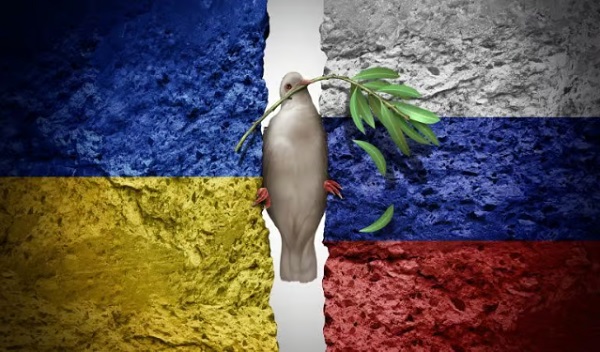
From the Brownstone Institute
By
What War Means
My mother once told me how my father still woke up screaming in the night years after I was born, decades after the Second World War (WWII) ended. I had not known – probably like most children of those who fought. For him, it was visions of his friends going down in burning aircraft – other bombers of his squadron off north Australia – and to be helpless, watching, as they burnt and fell. Few born after that war could really appreciate what their fathers, and mothers, went through.
Early in the movie Saving Private Ryan, there is an extended D-Day scene of the front doors of the landing craft opening on the Normandy beaches, and all those inside being torn apart by bullets. It happens to one landing craft after another. Bankers, teachers, students, and farmers being ripped in pieces and their guts spilling out whilst they, still alive, call for help that cannot come. That is what happens when a machine gun opens up through the open door of a landing craft, or an armored personnel carrier, of a group sent to secure a tree line.
It is what a lot of politicians are calling for now.
People with shares in the arms industry become a little richer every time one of those shells is fired and has to be replaced. They gain financially, and often politically, from bodies being ripped open. This is what we call war. It is increasingly popular as a political strategy, though generally for others and the children of others.
Of course, the effects of war go beyond the dismembering and lonely death of many of those fighting. Massacres of civilians and rape of women can become common, as brutality enables humans to be seen as unwanted objects. If all this sounds abstract, apply it to your loved ones and think what that would mean.
I believe there can be just wars, and this is not a discussion about the evil of war, or who is right or wrong in current wars. Just a recognition that war is something worth avoiding, despite its apparent popularity amongst many leaders and our media.
The EU Reverses Its Focus
When the Brexit vote determined that Britain would leave the European Union (EU), I, like many, despaired. We should learn from history, and the EU’s existence had coincided with the longest period of peace between Western European States in well over 2,000 years.
Leaving the EU seemed to be risking this success. Surely, it is better to work together, to talk and cooperate with old enemies, in a constructive way? The media, and the political left, center, and much of the right seemed at that time, all of nine years ago, to agree. Or so the story went.
We now face a new reality as the EU leadership scrambles to justify continuing a war. Not only continuing, but they had been staunchly refusing to even countenance discussion on ending the killing. It has taken a new regime from across the ocean, a subject of European mockery, to do that.
In Europe, and in parts of American politics, something is going on that is very different from the question of whether current wars are just or unjust. It is an apparent belief that advocacy for continued war is virtuous. Talking to leaders of an opposing country in a war that is killing Europeans by the tens of thousands has been seen as traitorous. Those proposing to view the issues from both sides are somehow “far right.”
The EU, once intended as an instrument to end war, now has a European rearmament strategy. The irony seems lost on both its leaders and its media. Arguments such as “peace through strength” are pathetic when accompanied by censorship, propaganda, and a refusal to talk.
As US Vice-President JD Vance recently asked European leaders, what values are they actually defending?
Europe’s Need for Outside Help
A lack of experience of war does not seem sufficient to explain the current enthusiasm to continue them. Architects of WWII in Europe had certainly experienced the carnage of the First World War. Apart from the financial incentives that human slaughter can bring, there are also political ideologies that enable the mass death of others to be turned into an abstract and even positive idea.
Those dying must be seen to be from a different class, of different intelligence, or otherwise justifiable fodder to feed the cause of the Rules-Based Order or whatever other slogan can distinguish an ‘us’ from a ‘them’…While the current incarnation seems more of a class thing than a geographical or nationalistic one, European history is ripe with variations of both.
Europe appears to be back where it used to be, the aristocracy burning the serfs when not visiting each other’s clubs. Shallow thinking has the day, and the media have adapted themselves accordingly. Democracy means ensuring that only the right people get into power.
Dismembered European corpses and terrorized children are just part of maintaining this ideological purity. War is acceptable once more. Let’s hope such leaders and ideologies can be sidelined by those beyond Europe who are willing to give peace a chance.
There is no virtue in the promotion of mass death. Europe, with its leadership, will benefit from outside help and basic education. It would benefit even further from leadership that values the lives of its people.
-
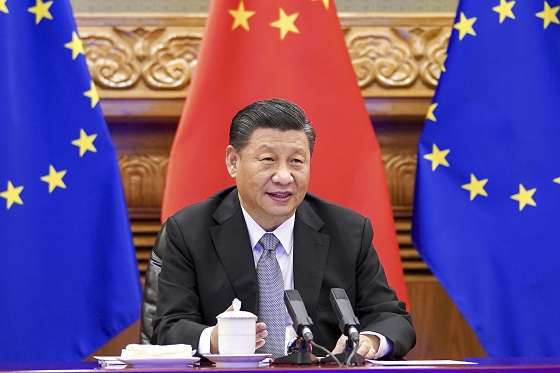
 Business2 days ago
Business2 days agoTrump: China’s tariffs to “come down substantially” after negotiations with Xi
-

 Business2 days ago
Business2 days agoTrump considers $5K bonus for moms to increase birthrate
-

 Business2 days ago
Business2 days agoChinese firm unveils palm-based biometric ID payments, sparking fresh privacy concerns
-
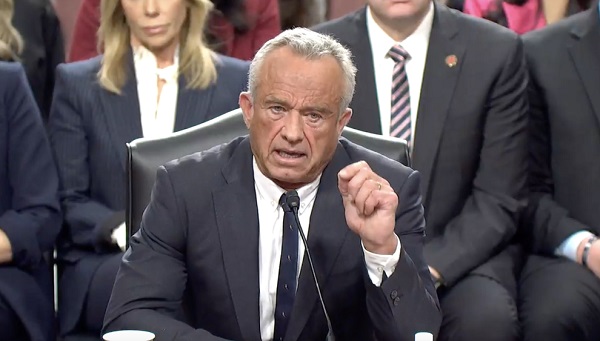
 COVID-192 days ago
COVID-192 days agoRFK Jr. Launches Long-Awaited Offensive Against COVID-19 mRNA Shots
-

 2025 Federal Election1 day ago
2025 Federal Election1 day agoConservatives promise to ban firing of Canadian federal workers based on COVID jab status
-

 Business1 day ago
Business1 day agoIs Government Inflation Reporting Accurate?
-

 2025 Federal Election1 day ago
2025 Federal Election1 day agoCarney’s Hidden Climate Finance Agenda
-
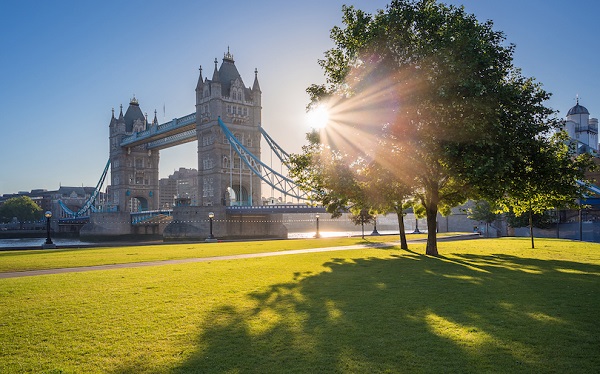
 Environment1 day ago
Environment1 day agoExperiments to dim sunlight will soon be approved by UK government: report









